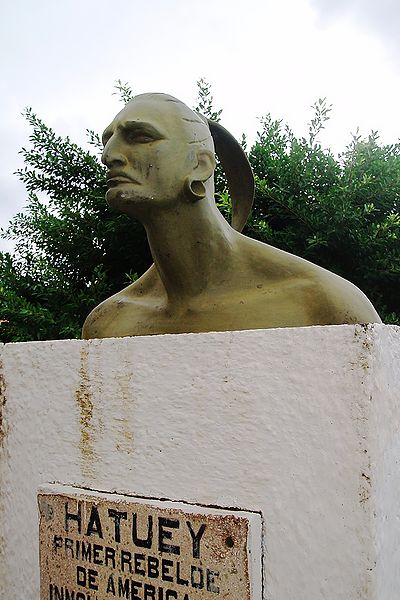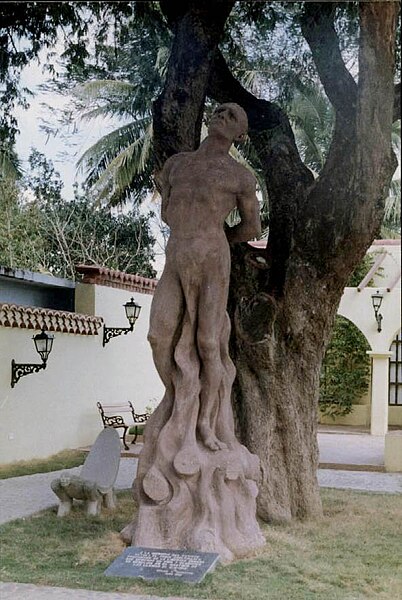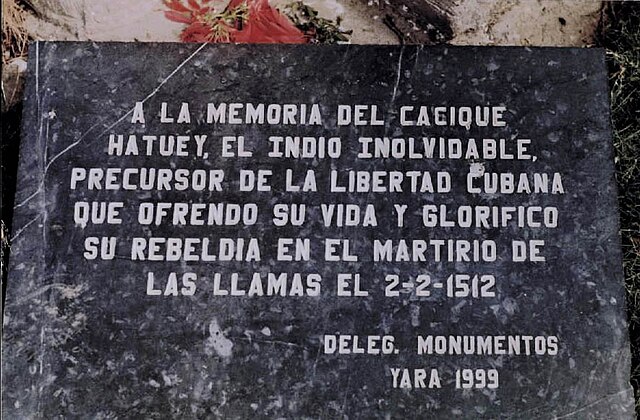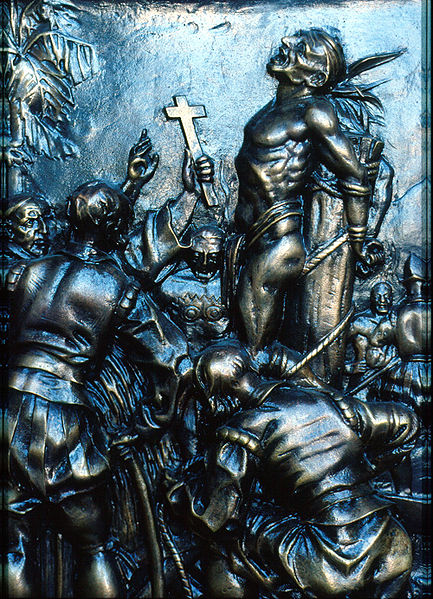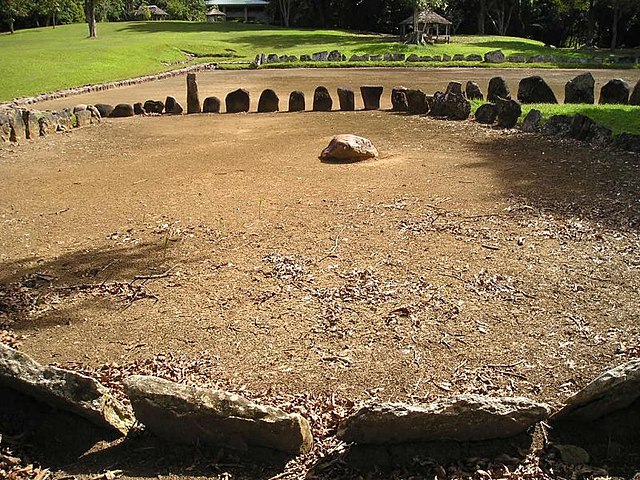Hatuey, also Hatüey was a Taíno Cacique (chief) of the Hispaniolan cacicazgo of Guanaba. He lived from the late 15th until the early 16th century. One day Chief Hatuey and many of his fellow-men traveled from present-day La Gonave, Haiti by canoe to Cuba to warn the Taíno in Cuba about the Spaniards that were coming to the island.
The monument of Hatuey, in Baracoa city, Cuba—the place he besieged the most while fighting the Spanish forces.
Monument of Taíno chief Hatuey in Yara city, depicting the moment he was burnt by Spanish soldiers, bound to a Tamarind tree planted in 1907.
Plate at the base of the monument. It reads "To the memory of Chief Hatuey, unforgettable native, precursor of the Cuban liberty, who offered his life, and glorified his rebellion in the martyrdom of the flames on 2/2/1512. Monuments Delegation of Yara, 1999".
Burning of Hatuey. From a bas-relief of the portal of El Capitolio of Havana.
The Taíno were a historic Indigenous peoples of the Caribbean, whose culture has been continued today by Taíno descendant communities and Taíno revivalist communities. At the time of European contact in the late 15th century, they were the principal inhabitants of most of what is now Cuba, the Dominican Republic, Jamaica, Haiti, Puerto Rico, the Bahamas, and the northern Lesser Antilles. The Lucayan branch of the Taíno were the first New World peoples encountered by Christopher Columbus, in the Bahama Archipelago on October 12, 1492. The Taíno spoke a dialect of the Arawakan language group. They lived in agricultural societies ruled by caciques with fixed settlements and a matrilineal system of kinship and inheritance. Taíno religion centered on the worship of zemis.
Statue of Agüeybaná II, "El Bravo" in Ponce, Puerto Rico
Reconstruction of a Taíno village in El Chorro de Maíta, Cuba
Dujo, a wooden ceremonial chair crafted by Taínos
Caguana Ceremonial ball court (batey) in Puerto Rico, outlined with stones

